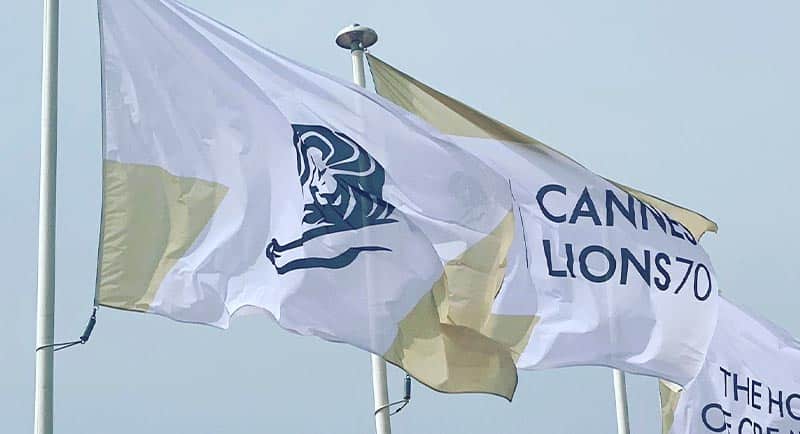By Tennille Burt, chief marketing officer, QMS
Two recent global award competitions, one clear universal message: out of home (OOH) has cemented its position as a vital part of successful omnichannel media strategies and campaigns.
The award winners from the recent World Out of Home Organisation’s (WOO) Global Congress and the outdoor category in the Cannes Lions were powerful examples of how OOH has become an integral piece in omnichannel campaign planning. Highly measurable results continue to prove the influence of OOH with consumers. For clients engaged in omnichannel strategies, OOH doesn’t just have a seat at the table: it is one of the table’s legs – perhaps the strongest one.
Presenting some of this year’s winners, Cannes outdoor jury chair Javier Campopiano from WPP’s Grey observed that outdoor “started as a static medium but is now the least static medium of them all… it is a very exciting category, almost limitless”.
With the increasing global adoption of digital OOH (DOOH) – now at 37.8% in Europe, 39.8% in APAC and 29.7% in North America according to WOO – the opportunities that OOH presents only increase as we push physical, social, creative and geographical boundaries with the medium. The winners at Cannes and the WOO Global Congress clearly demonstrate this point.

The Grand Prix winner for Outdoor at Cannes from British Airways included 512 different executions to bring to life the reasons people travel. The campaign centred on the common question travellers are frequently asked when they land in a new destination – “What is the purpose of your visit?” – but instead of ticking the standard boxes of “business” or “leisure”, consumers saw more meaningful and relatable answers for travel.
The answers were sometimes funny, sometimes moving, but consistently celebrated humanity in all its personal guises. This was an omnichannel strategy that incorporated TV, video on demand, cinema, radio, print, display, social but the thread linking each of these stories really unfolded using OOH.
An OOH photo exhibition was the core of the Gold Lion-winning “The Last Photo” suicide prevention campaign from ITV and the Campaign Against Living Miserably (CALM), which shone a light on the heart-breaking reality that suicide doesn’t always look suicidal.
To launch, an installation of 50 smiling portraits was unveiled at London’s South Bank with photos of people living seemingly happy, care-free lives. Two days later, the true nature of the experience was revealed live on ITV’s This Morning: the portraits were, in fact, the last photos of people who lost their lives to suicide. The out of home exhibition was amplified in other ITV programs and across TV, cinema, print, digital and social and was a powerful reminder of the public influence and responsibility OOH has in connecting with our communities. It was OOH that creatively delivered the raw emotion with its in-market presence.
At the WOO Global Congress, the winner in the Creative Awards Digital category – the Japanese campaign “Take A Chance with McDonald’s” – showed how DOOH played a key role in an omnichannel strategy to drive young customers to order new McDonald’s menu items via their mobile.
McDonald’s developed “changing QR codes” that created unexpected encounters with menu items and were broadcast on digital out of home screens nationwide, dynamically adapting to real-time changes in location, climate, time, and other factors. When scanning the changing QR codes random menu recommendations were provided, and users could directly place orders through mobile ordering, then share to social for further amplification and engagement. The campaign drew participation from over two million people with measurable KPIs such as sales increasing by 112%, showing DOOH’s ability to work through all stages of the sales funnel.

Still at WOO, the Technical Innovation Award went to Subway in the UK, which worked with several partners to create the first-ever interactive shoppable 3D billboard. It was a borderless DOOH activation that turned one of the world’s largest digital billboards at Westfield Stratford City into a personal shopping moment where people could build their “dream subs” live on-screen. This execution is DOOH at its best, bringing together technology, personalised brand experience and virtual reality to reimagine a category for its audience.
These four winners and many others at Cannes and the WOO Global Congress were brilliant examples of how OOH in its various forms plays a pivotal role in delivering the greatest potential impact of a message. It has the assets and the ability to complement other players within the digital ecosystem and to ensure a message is clearly received, a story accurately told, and a campaign powerfully delivered.
Supercharged by advances in creativity, data and technology, OOH (particularly DOOH) has a new competitive advantage for brands that are fearlessly planning for the future.
As Campopiano put it so well, the potential for out of home and its clients is limitless.
–
Top Image: Tennille Burt

